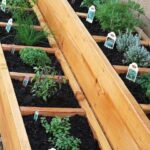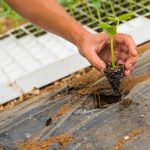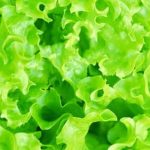Are you interested in growing vegetable gardens? Whether you have a green thumb or are just starting out, there are countless benefits to cultivating your own garden.
From providing fresh produce for your kitchen to promoting a healthy and sustainable lifestyle, growing vegetable gardens can be a rewarding experience. In this article, we will explore the essential steps and tips for creating and maintaining a successful vegetable garden, as well as provide guidance on selecting the right location, choosing the best vegetables to grow, and troubleshooting common garden problems.
There’s something truly special about being able to step outside and pick fresh vegetables from your own garden. Not only does it save money at the grocery store, but it also allows you to enjoy organic, homegrown produce that is free from harmful pesticides.
Personally, I remember the joy of planting my first tomato plant and eagerly watching as it grew into a bountiful harvest. This hands-on experience taught me valuable lessons about patience, hard work, and the satisfaction of reaping what I sow.
In this section of the article, we will discuss some of the fundamental aspects of starting a vegetable garden – from selecting the right location to preparing the soil. With these essential steps in mind, you’ll be on your way to creating a thriving garden that will provide you with a variety of delicious and nutritious vegetables throughout the growing season. So let’s dive in and discover how you can bring the joys of gardening into your own backyard.
Selecting the Right Location
When it comes to growing vegetable gardens, selecting the right location is crucial for the success of your garden. The amount of sunlight and quality of soil can greatly impact the health and yield of your vegetables. Therefore, it is important to carefully consider these factors when choosing a spot for your garden.
Tips for finding the ideal location for your vegetable garden:
1. Sunlight: Choose a spot that receives at least 6-8 hours of sunlight per day. Most vegetables require full sun to thrive and produce a bountiful harvest.
2. Soil Quality: Test the soil in potential areas for your garden. Look for well-draining soil with good fertility. Adding compost or organic matter to improve soil structure and fertility can help ensure healthy plant growth.
3. Accessibility: Consider how easily accessible the location is for watering, weeding, and harvesting. A convenient location will make it easier to maintain and enjoy your garden.
Before breaking ground on your vegetable garden, take some time to observe different areas of your yard or property to find the best location that meets these criteria. By selecting a suitable spot for your garden, you can set yourself up for successful growing season.
Remember that growing vegetable gardens should be an enjoyable experience, so taking the time to choose the right location will benefit both you and your plants in the long run. Now that you have selected an ideal location, it’s time to move on to choosing which vegetables to grow in your new garden space.
Choosing the Right Vegetables to Grow
When it comes to growing vegetable gardens, one of the most important decisions you’ll make is which vegetables to grow. Selecting the right vegetables for your garden can make a significant difference in the success and enjoyment of your gardening experience. As a beginner, it’s essential to start with vegetables that are relatively easy to grow and maintain.
Some of the best vegetables for beginners include tomatoes, lettuce, carrots, radishes, and green beans. These vegetables are known for their resilience and relatively low maintenance requirements, making them ideal for those who are new to gardening. Additionally, consider the seasonality and climate suitability of different vegetables in your area. Certain vegetables thrive in specific climates and seasons, so it’s crucial to choose varieties that will flourish in your local environment.
Before choosing the vegetables for your garden, take some time to research which ones are best suited for your region and climate. You can also consult with local gardening experts or visit nurseries in your area for recommendations on the best vegetable varieties to grow. By selecting the right vegetables based on your experience level and local conditions, you’ll set yourself up for a successful growing season with a bountiful harvest of fresh produce from your own garden.
As you gain more experience with growing vegetable gardens, you can gradually expand your selection of vegetables based on your interests and preferences. Experimenting with new varieties each season can be a fun way to continue learning and improving as a gardener. Remember that every garden is unique, so don’t be afraid to try different combinations of vegetables until you find the perfect mix for your own thriving vegetable garden.
Preparing the Soil
When it comes to growing vegetable gardens, one of the most crucial steps is preparing the soil. The quality of the soil directly impacts the health and productivity of your garden, making it essential to invest time and effort into this stage of the process. Properly prepared soil provides a strong foundation for healthy plant growth and abundant harvests.
Soil preparation begins with testing the pH levels and composition of the soil in your chosen location. This will help you determine what amendments are needed to create an optimal growing environment for your vegetables. Adding organic matter such as compost or well-rotted manure can improve soil structure, fertility, and water retention. It also provides essential nutrients for plant growth.
Once you have determined the condition of your soil, it’s time to start preparing it for planting. Begin by clearing the area of any debris, rocks, or weeds that may hinder plant growth. Dig or till the soil to break up compacted areas and create a loose, aerated bed for your vegetables. Adding a layer of mulch after planting will help to retain moisture, regulate temperature, and suppress weed growth.
Taking the time to properly prepare your soil not only benefits your current growing season but also sets the stage for future success in your vegetable garden. By creating a healthy environment for your plants from the start, you can expect higher yields and healthier crops as you continue to sustainably grow vegetable gardens year after year.
Planting and Maintaining the Garden
Once you have selected the perfect location for your vegetable garden and chosen the right vegetables to grow, it’s time to get your hands dirty and start planting. Proper planting and garden maintenance are crucial for the success of your vegetable garden. Here are some tips to help you get started:
- Proper Spacing: When planting your vegetables, it is important to consider proper spacing to allow plants to receive adequate sunlight, water, and nutrients. Be sure to follow the spacing guidelines provided on seed packets or plant labels.
- Planting Techniques: Different vegetables may require different planting techniques. For example, root vegetables like carrots and radishes should be planted directly into the soil, while tomato seedlings should be planted with a trellis for support.
- Garden Maintenance: Regular watering, weeding, and monitoring for pests are essential for maintaining a healthy vegetable garden. Be sure to water your plants consistently, especially during dry periods, and remove any weeds that may compete with your vegetables for nutrients.
In addition to these basic maintenance tasks, it is important to keep an eye on the overall health of your plants and address any issues promptly.
Now that you have planted your vegetable garden and are maintaining it properly, take some time to admire the growth of your plants, as well as monitor any potential signs of disease or pest infestations. By staying on top of maintenance tasks, you can ensure a bountiful harvest from your growing vegetable gardens in no time.
Dealing With Pests and Diseases
Common Pests and Diseases
One of the challenges of growing vegetable gardens is dealing with pests and diseases that can affect your crops. Common pests such as aphids, caterpillars, and snails can wreak havoc on your plants, while diseases like powdery mildew and bacterial wilt can also cause damage. It’s important to be able to identify these pests and diseases early on in order to effectively manage them.
Organic Pest and Disease Management
For those who are passionate about organic gardening, there are plenty of natural solutions for managing pests and diseases in your vegetable garden. For example, introducing beneficial insects like ladybugs or using neem oil can help control pest populations without resorting to chemical pesticides. Additionally, companion planting – where certain plants are grown together to deter pests – can also be an effective organic pest management strategy.
Chemical-Free Solutions
While some gardeners may opt for chemical pesticides and fungicides to combat pests and diseases, it’s important to consider the potential impact of these chemicals on the environment and human health. Instead, there are a variety of chemical-free solutions available for managing common garden problems. For example, creating physical barriers like netting or row covers can protect plants from insect damage, while regularly inspecting your plants for signs of disease can help prevent their spread.
By being proactive in identifying and managing pests and diseases in your vegetable garden, you can ensure a bountiful harvest of healthy, delicious produce for you and your family to enjoy.
As we continue our discussion on growing vegetable gardens, it’s crucial to address the various challenges that come with maintaining a healthy garden. Pests and diseases can be detrimental to the success of any gardener; however, armed with knowledge on how to effectively manage these issues using organic methods or chemical-free solutions will lead you to becoming a successful gardener.
Harvesting and Enjoying the Fruits of Your Labor
Once your vegetable garden is flourishing, it’s important to know when and how to harvest your crops. This not only ensures that you enjoy your produce at its peak freshness and flavor but also encourages further growth. Different vegetables have different harvesting times, so it’s essential to familiarize yourself with the specific requirements of each crop.
For example, tomatoes are best picked when they are fully colored and firm but still slightly soft. On the other hand, leafy greens like lettuce and spinach can be harvested as soon as they reach a desired size. Root vegetables such as carrots and radishes should be gently pulled from the soil to avoid damage. It’s crucial to research the optimal harvesting times for the vegetables you’re growing and keep an eye on their progress.
After harvesting, proper storage is key to enjoying your produce for an extended period. Some vegetables can be stored in a cool, dark place for several days or even weeks, while others may require immediate consumption or preservation through freezing or canning. Additionally, knowing how to properly clean and prepare your vegetables for cooking or eating raw is essential for maximizing their taste and nutritional value.
It’s also important to remember that gardening involves a learning curve. Not every harvest will turn out perfectly, but each experience provides valuable insight for future success. Embracing the process of growing vegetable gardens means celebrating successes while also learning from mistakes.
| Vegetable | Optimal Harvesting Time |
|---|---|
| Tomatoes | Fully colored and firm yet slightly soft |
| Lettuce | As soon as they reach desired size |
| Carrots | Gently pulled from the soil to avoid damage |
| Radishes | When roots have reached about an inch in diameter |
Troubleshooting Common Garden Problems
Identifying Common Garden Problems
One of the challenges that many gardeners face when growing vegetable gardens is dealing with common garden problems. These can range from poor growth and yellowing leaves to pest infestations and diseases. It’s important to be able to identify these issues early on so that you can take the necessary steps to address them and ensure a successful harvest.
Addressing Poor Growth
If you notice that your vegetable plants are not growing as well as they should, there are a few potential causes to consider. First, check the soil quality – it may be lacking in essential nutrients such as nitrogen, phosphorus, or potassium. Consider adding organic fertilizers or compost to improve the soil’s nutrient content. Additionally, improper watering or inadequate sunlight can also contribute to poor growth. Make sure your plants are getting enough water and sunlight for optimal growth.
Dealing With Pest Infestations
Pests like aphids, caterpillars, and beetles can wreak havoc on vegetable gardens if left unchecked. One effective way to manage pest infestations is by introducing natural predators such as ladybugs or using organic insecticidal soaps and oils. Companion planting is another strategy that involves growing certain plants together to repel pests. By incorporating pest-resistant plants into your garden, you can help prevent infestations from occurring.
Preventing Disease Outbreaks
Diseases such as powdery mildew and blight can quickly spread throughout a vegetable garden if not properly managed. To prevent disease outbreaks, it’s important to practice good garden hygiene by removing any affected plants or leaves promptly. Proper spacing between plants also helps improve air circulation and reduces the risk of diseases spreading. Finally, using disease-resistant varieties of vegetables can also help minimize the likelihood of disease affecting your garden.
By understanding how to troubleshoot common garden problems and taking proactive measures to address them, you can increase your chances of having a successful harvest in your vegetable garden. Remember that every gardener encounters challenges along the way, but with patience and perseverance, you’ll be able to enjoy the fruits of your labor in no time.
Conclusion
In conclusion, growing vegetable gardens is a highly rewarding and beneficial endeavor for individuals and families alike. Not only does it allow for the production of fresh, organic produce, but it also promotes healthy outdoor activity and environmental sustainability. From personal experience, I have found that tending to my own vegetable garden has brought me a sense of pride and satisfaction, as well as a deeper connection to the food I consume.
As discussed throughout this article, selecting the right location with adequate sunlight and soil quality is crucial for the success of a vegetable garden. Choosing the right vegetables to grow based on seasonality and climate suitability, as well as proper soil preparation, are also key factors in achieving a thriving garden.
Additionally, planting and maintaining the garden while dealing with pests and diseases may present challenges; however, the rewards of harvesting and enjoying the fruits of one’s labor make it all worthwhile.
I encourage readers to take the plunge into growing their own vegetable gardens. By following the tips and information provided in this article, individuals can harness the joy of cultivating their own organic produce.
Embracing a lifestyle of gardening not only offers tangible benefits such as fresh vegetables but also fosters a deeper appreciation for nature and sustainable living. Let’s pick up our shovels and seeds, embark on this journey together, and share our experiences with others in order to spread the joy of growing vegetable gardens.
Frequently Asked Questions
What Month Is Best to Plant Vegetable Garden?
The best month to plant a vegetable garden depends on your location and the typical climate of your area. In general, early spring or late summer are good times to start planting, as the weather is not too harsh for most vegetables.
What Is a Good Layout for a Vegetable Garden?
A good layout for a vegetable garden is one that takes into account sunlight, water access, and proper spacing between plants. Raised beds or rows with paths in between can help optimize growth and make maintenance easier.
What Are the Easiest Vegetables to Grow in a Garden?
Some of the easiest vegetables to grow in a garden include tomatoes, cucumbers, zucchini, lettuce, and radishes. These plants tend to be relatively low-maintenance and can thrive in a variety of growing conditions.

If you’re looking to get into vegetable gardening, or are just looking for some tips on how to make your current garden better, then you’ve come to the right place! My name is Ethel and I have been gardening for years. In this blog, I’m going to share with you some of my best tips on how to create a successful vegetable garden.





